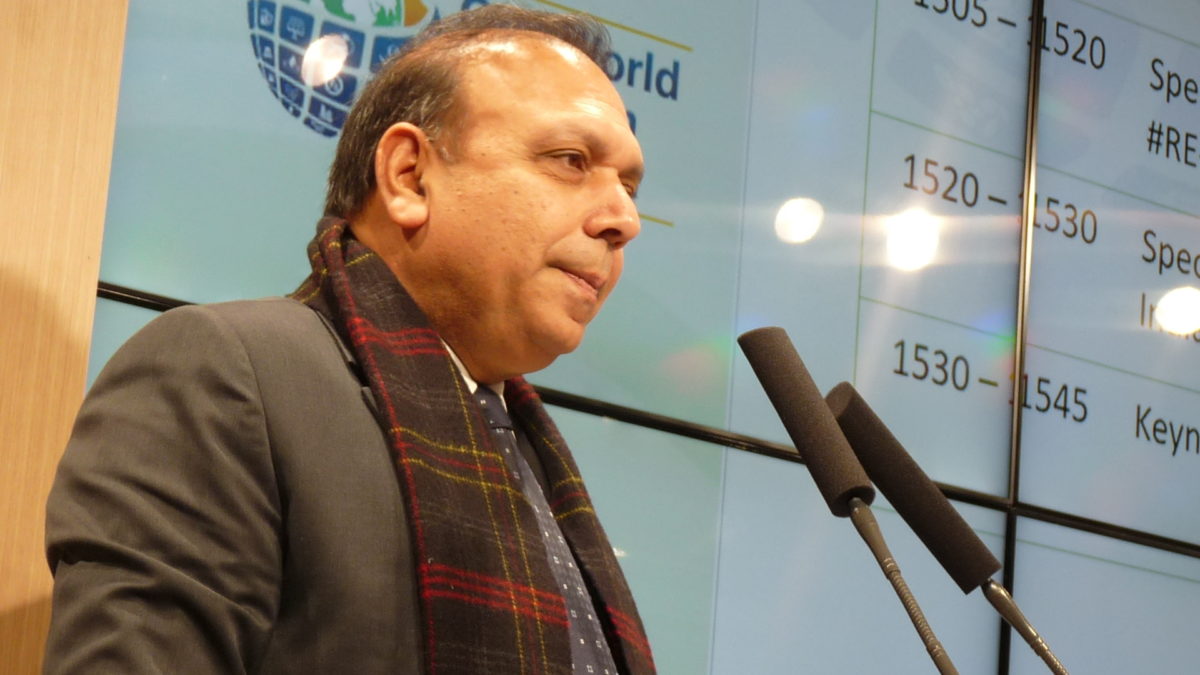In a bid to allay fears among global investors, the Indian government has assured them of payment security mechanism to de-risk investments in renewables.
“Payment security mechanism to de-risk investments in renewables has been put in place,” said Ministry of New & Renewable Energy (MNRE) secretary Anand Kumar on the sidelines of a Climate Conference (COP25) in Madrid, Spain, adding that the Ministry is also working with farmers and commercial and industrial (C&I) consumers to embed them into the renewables value chain as direct stakeholders.
“To enhance the ease of doing business for developers, the government is committed to managing curtailments for renewable energy projects. [Towards that end] it is increasing the number of Regional Energy Management Centres to support the increasing share of renewables,” said the minister.
Significantly, the minister’s announcement comes at a time when analysts fear that potential disregard of past contractual agreements in Andhra Pradesh—along with the regular curtailment of renewable energy facilities and delayed payments by the state’s distribution companies (DISCOMs) to developers in the state—may drive foreign investors to reassess whether India’s renewable energy sector can be viewed with the same optimism as a few years ago.
Three of Andhra Pradesh’s top renewable energy developers (Greenko, ReNew Power and Mytrah Energy) are backed by foreign investors.
$300 billion investment opportunity
Kumar expressed confidence that India will meet its target of 175 GW renewable energy capacity by 2022 and increase it to 450 GW over time. The country’s current capacity is 83 GW, with additional 70 GW under fruition.
To achieve the year 2022 target in time, the Ministry of New and Renewable Energy (MNRE) is aiming to bid out the balance capacities for solar and wind by June 2020, so that developers get 30 months’ time to complete deployment, he said.
Given the ambitious RE targets, “Additional investments in renewable up to year 2022 would be about $80 billion at today’s prices and an investment of around $300 billion would be required up to 2030,” announced the minister, underlining the need for catalysing private investment and expand India’s clean energy market through innovative risk mitigation and aggregation instruments.
Talking of the initiatives, he informed about the Indian Renewable Energy Development Agency’s ‘green window’ initiative that aims to attract private capital to the under-served segments of the market.
Top contenders for the green window include storage, electric mobility, distributed renewables and energy efficiency.
IREDA is also launching its own Alternate Investment Fund to recycle its capital by attracting insurance, pension funds, etc, with the aim to deepen the bond market, and in turn, allow the projects to directly link with public funds.
This content is protected by copyright and may not be reused. If you want to cooperate with us and would like to reuse some of our content, please contact: editors@pv-magazine.com.









By submitting this form you agree to pv magazine using your data for the purposes of publishing your comment.
Your personal data will only be disclosed or otherwise transmitted to third parties for the purposes of spam filtering or if this is necessary for technical maintenance of the website. Any other transfer to third parties will not take place unless this is justified on the basis of applicable data protection regulations or if pv magazine is legally obliged to do so.
You may revoke this consent at any time with effect for the future, in which case your personal data will be deleted immediately. Otherwise, your data will be deleted if pv magazine has processed your request or the purpose of data storage is fulfilled.
Further information on data privacy can be found in our Data Protection Policy.